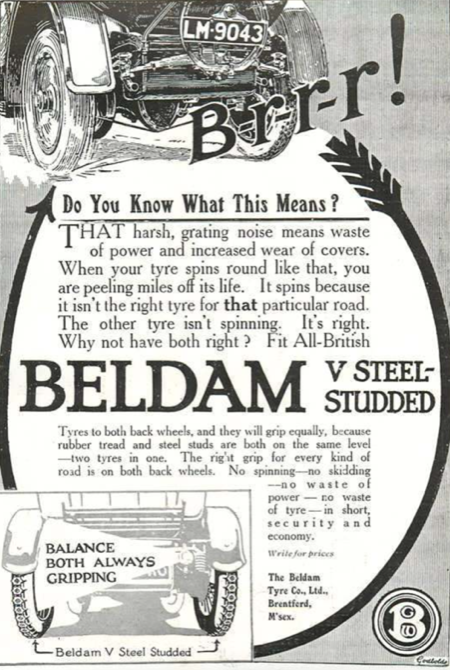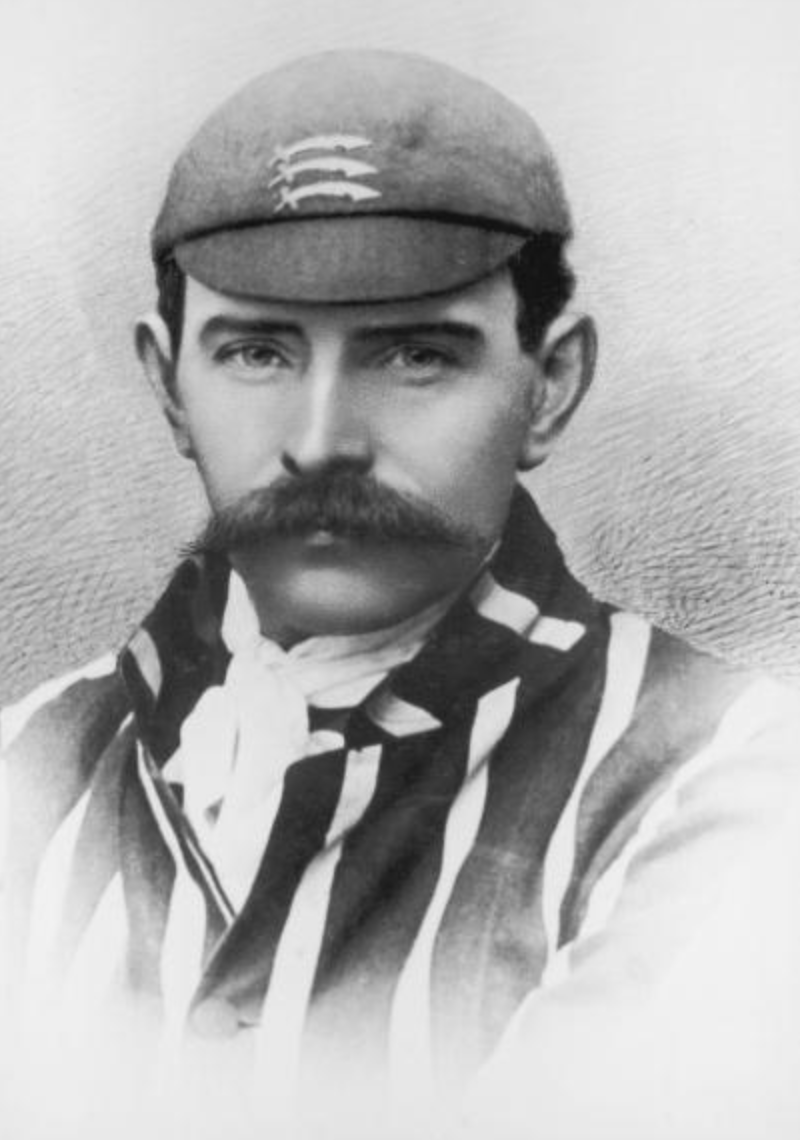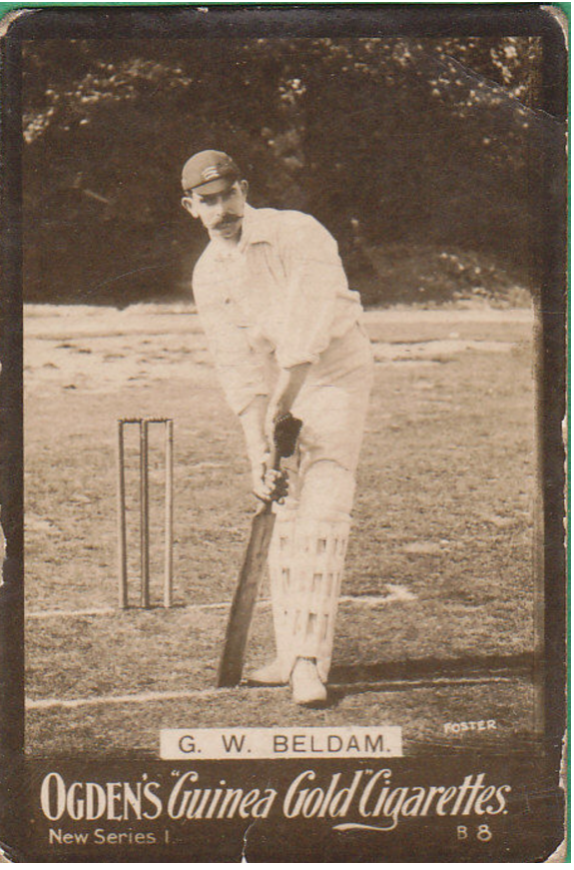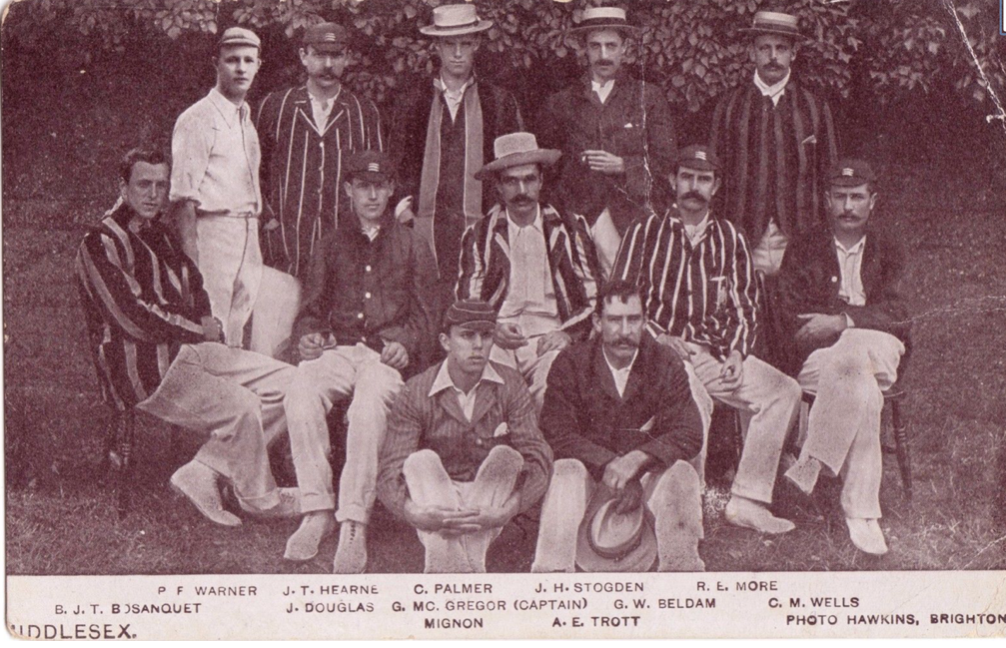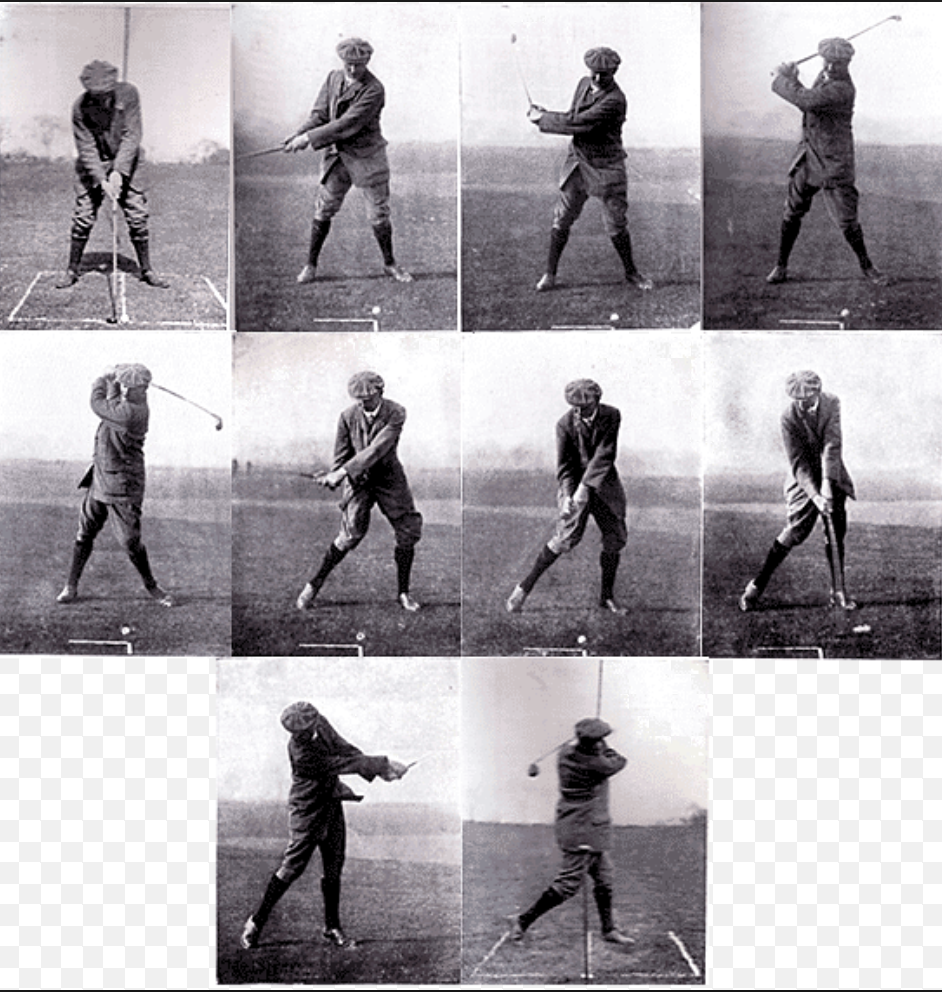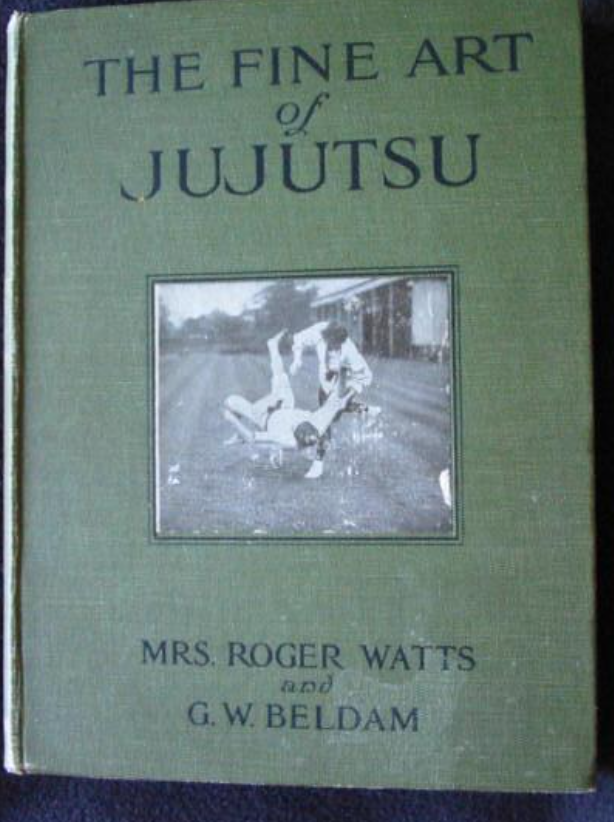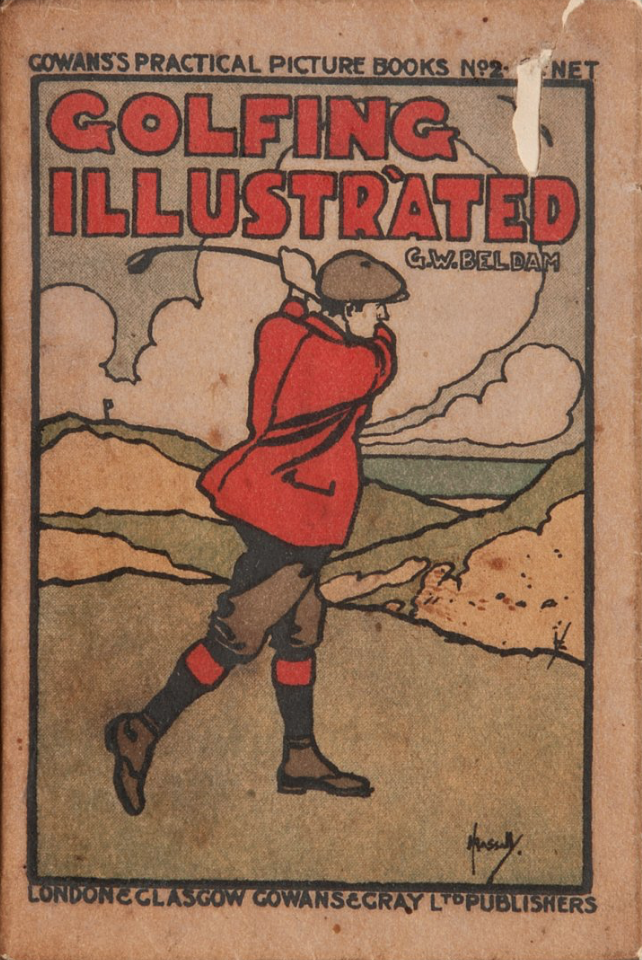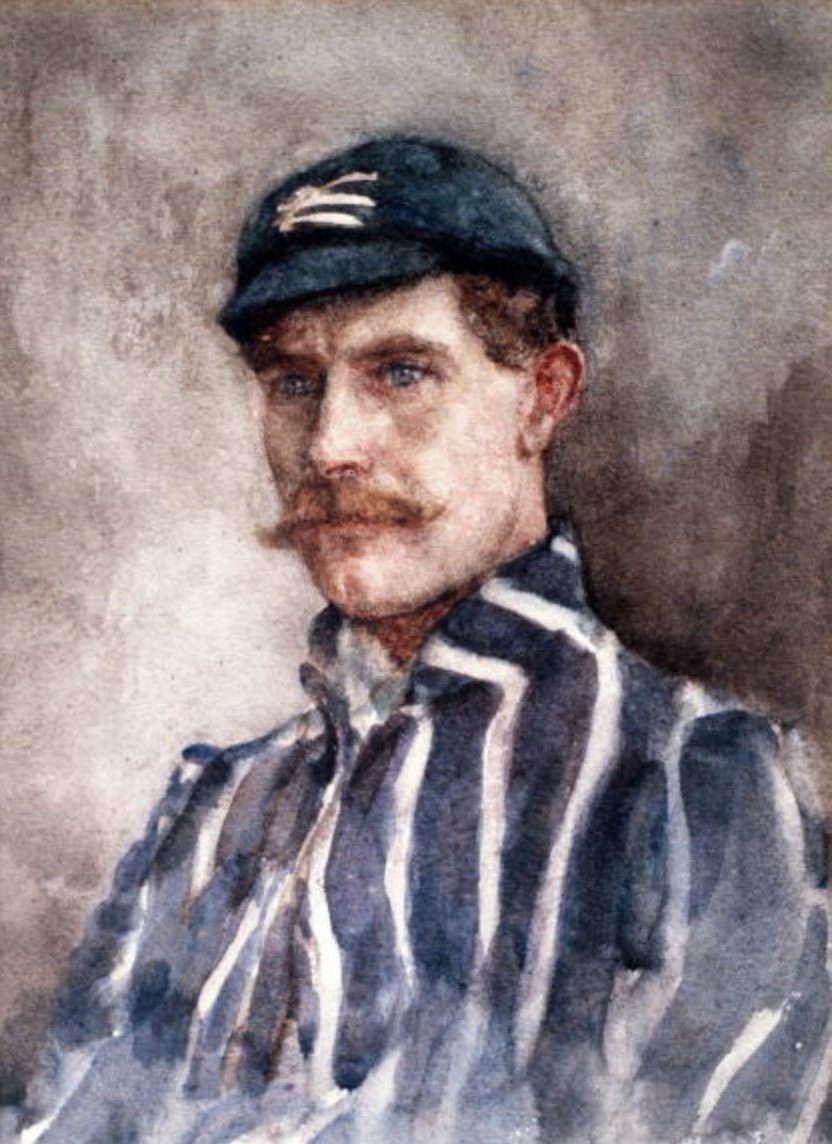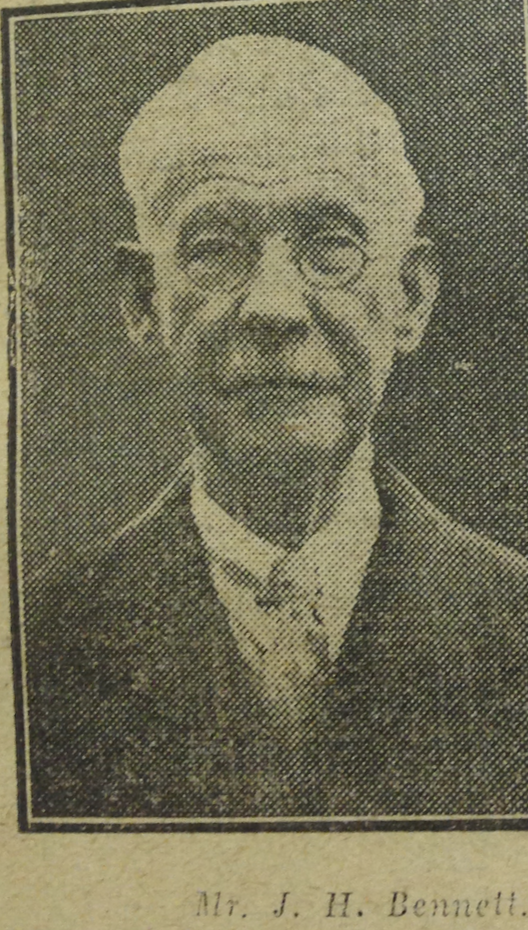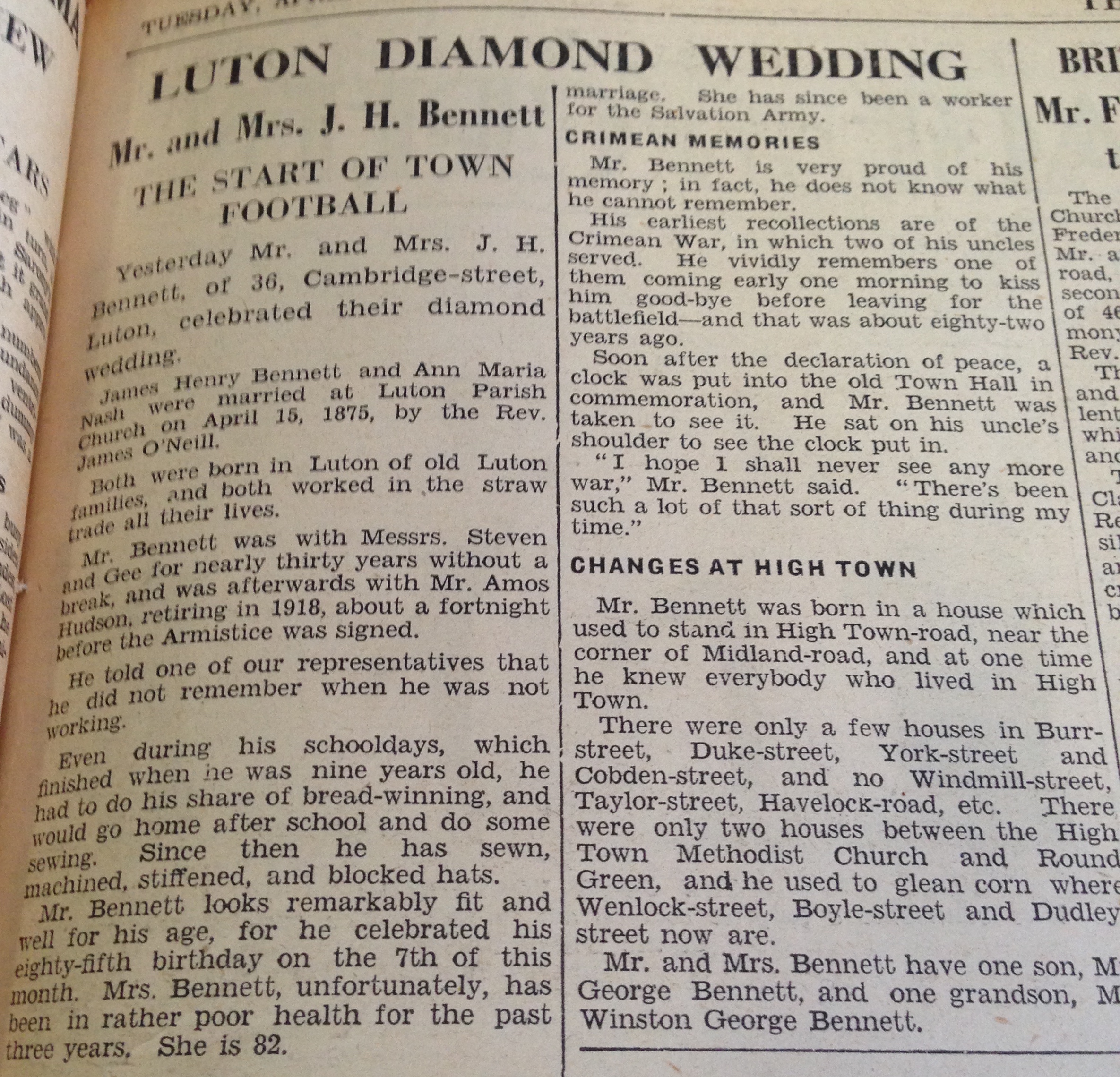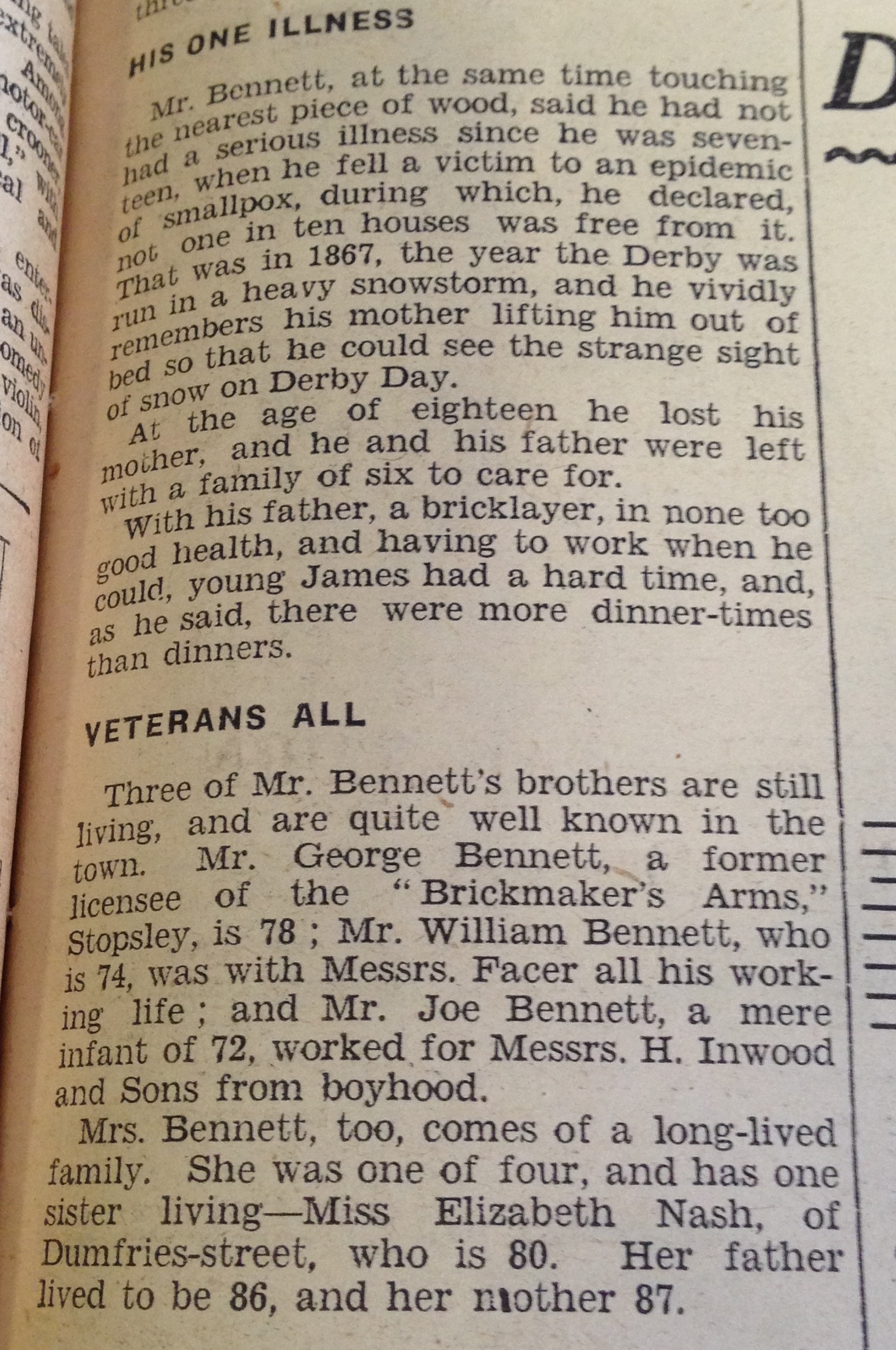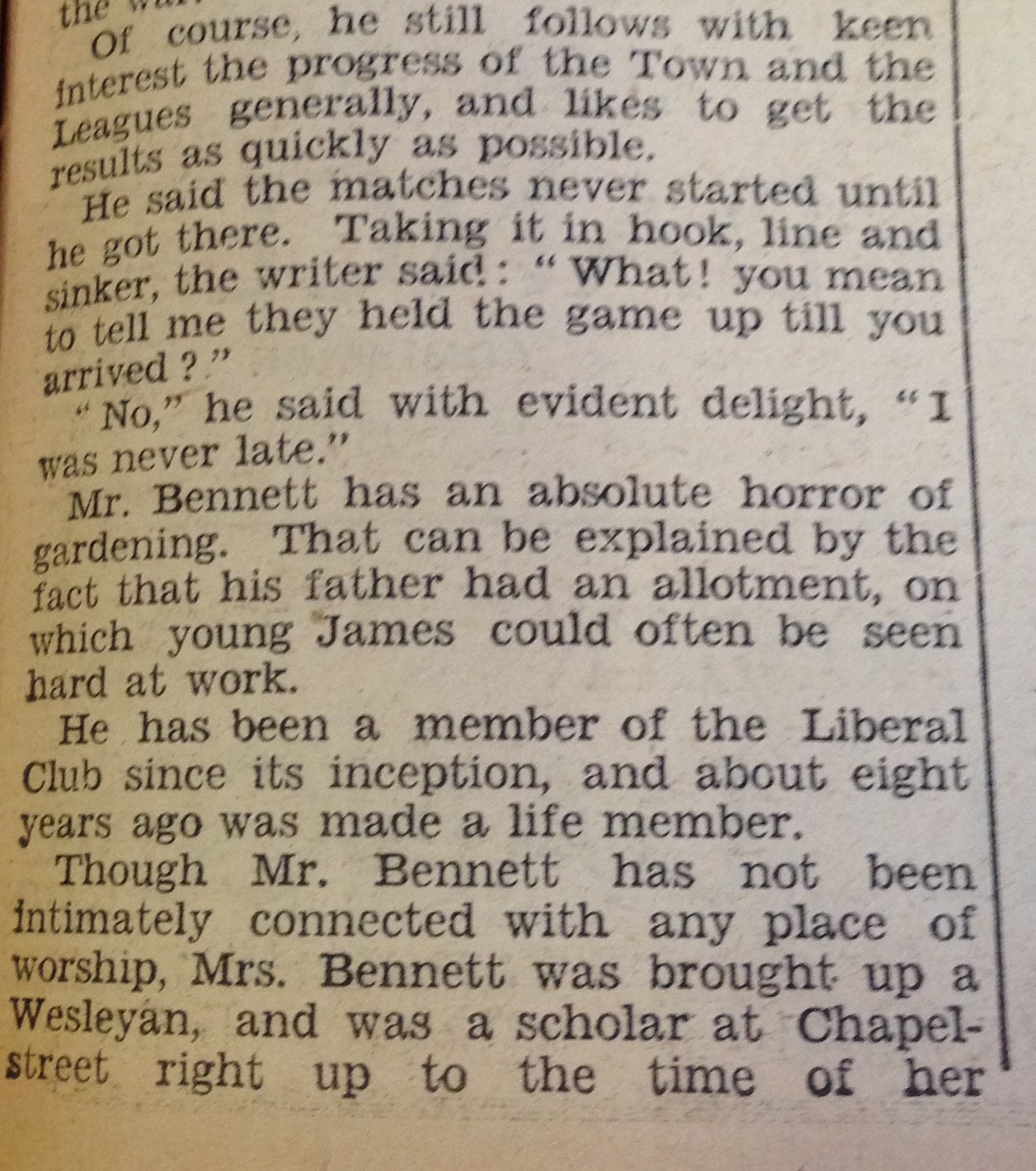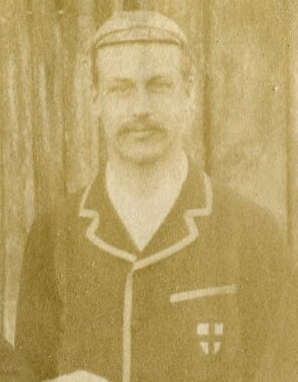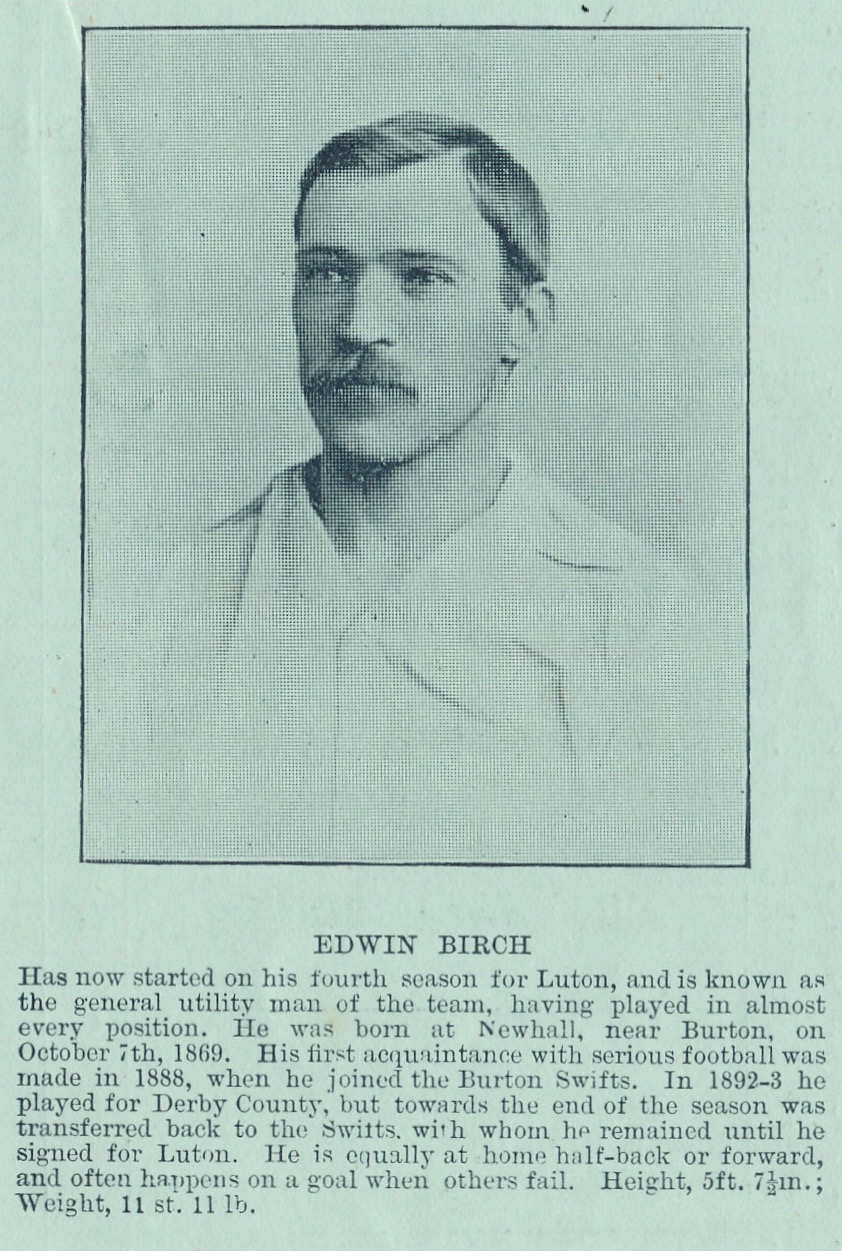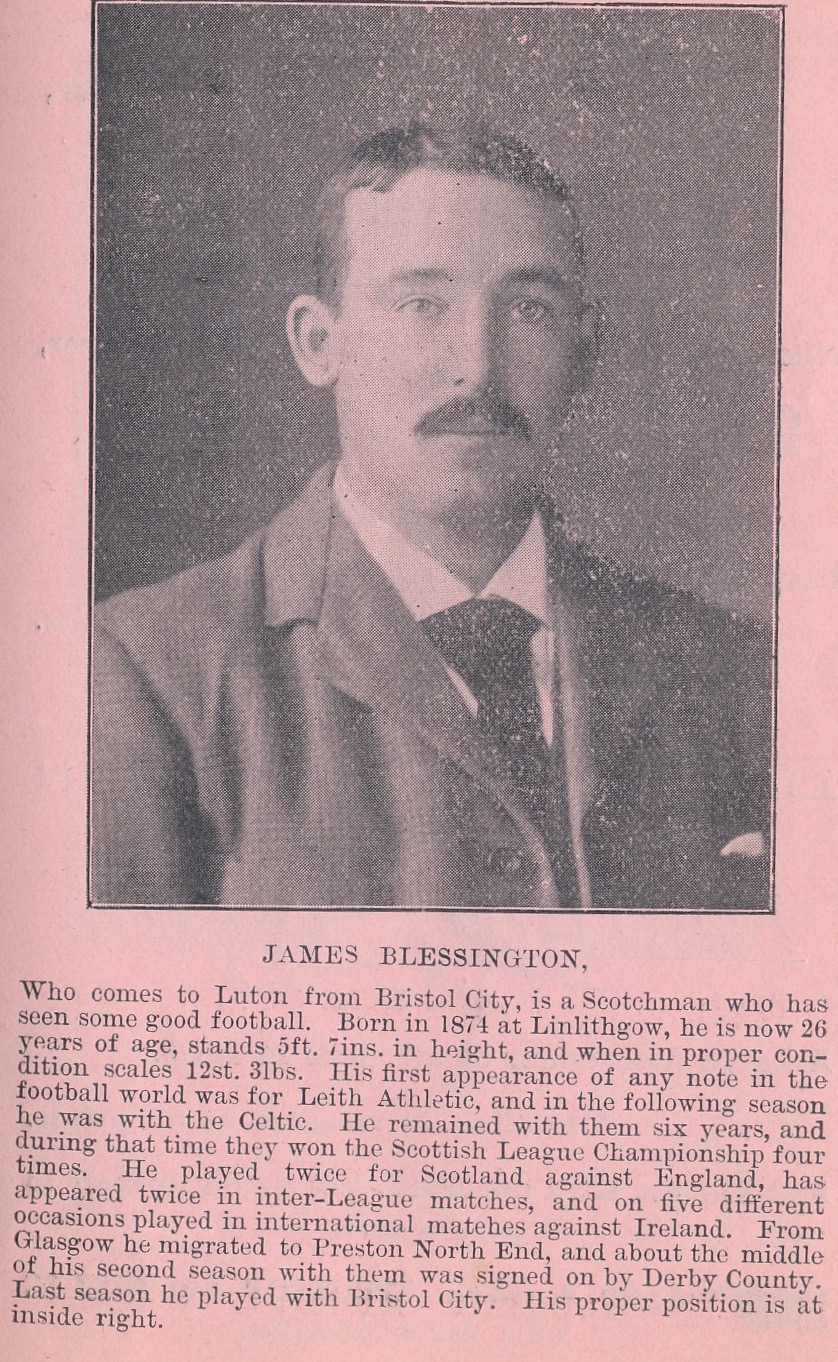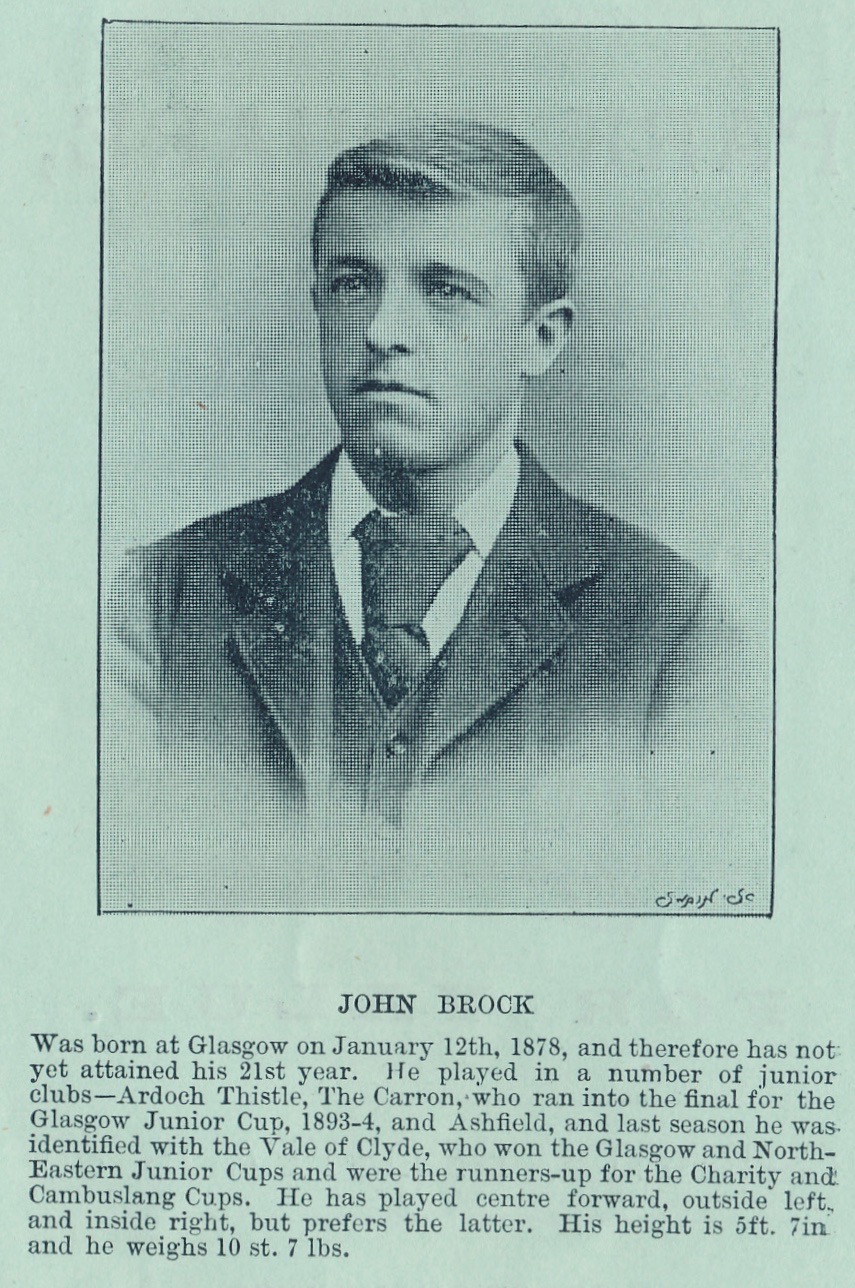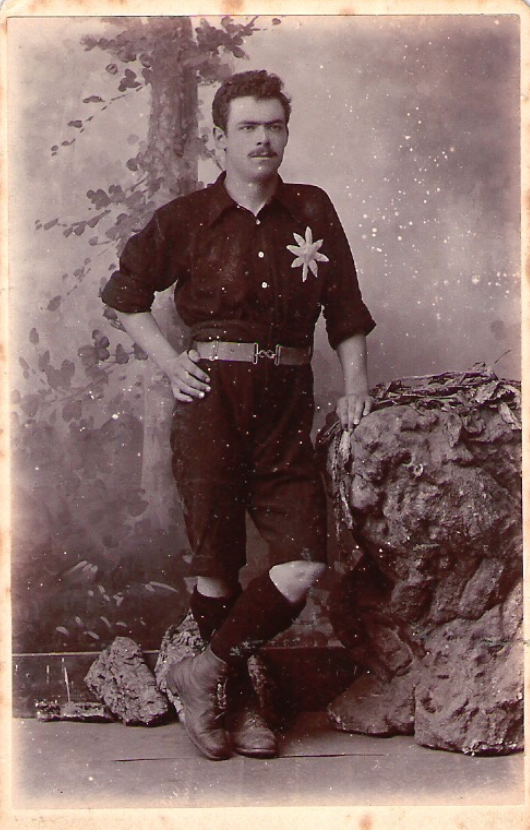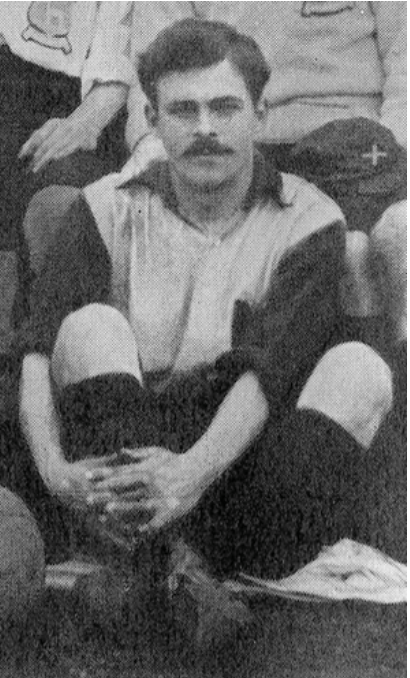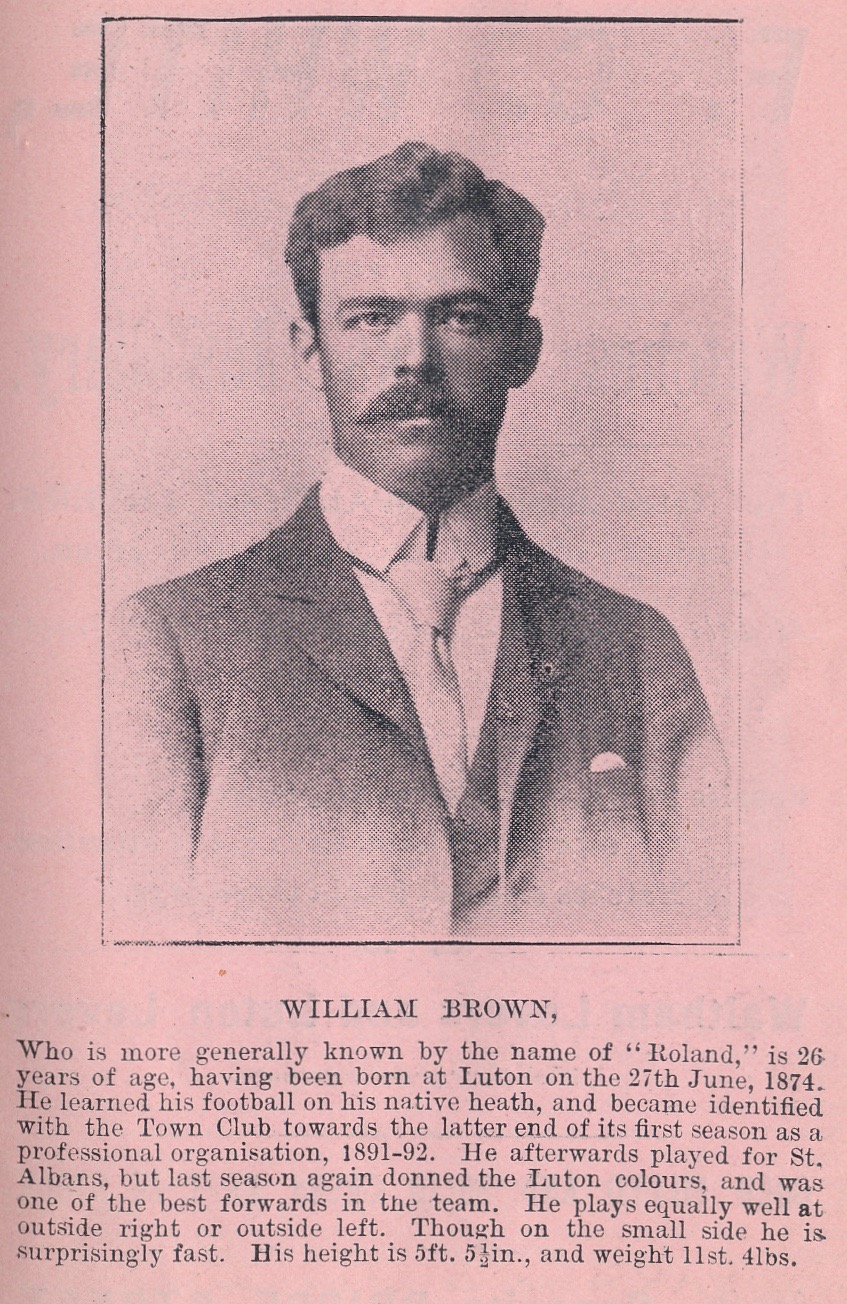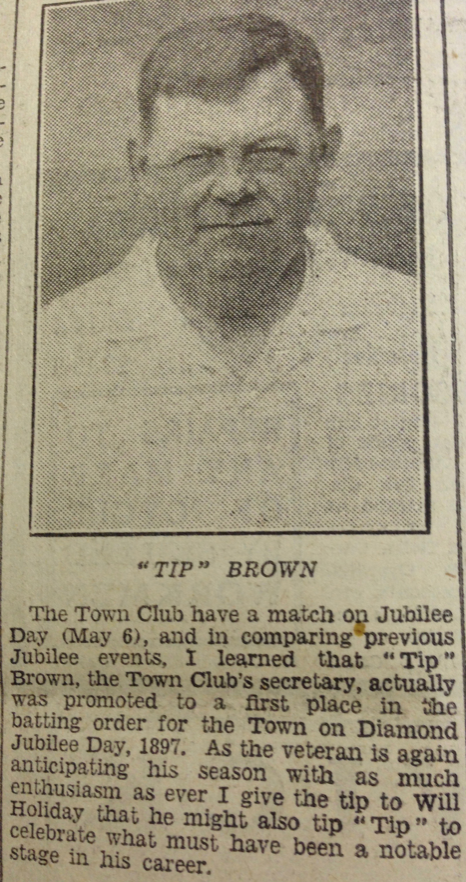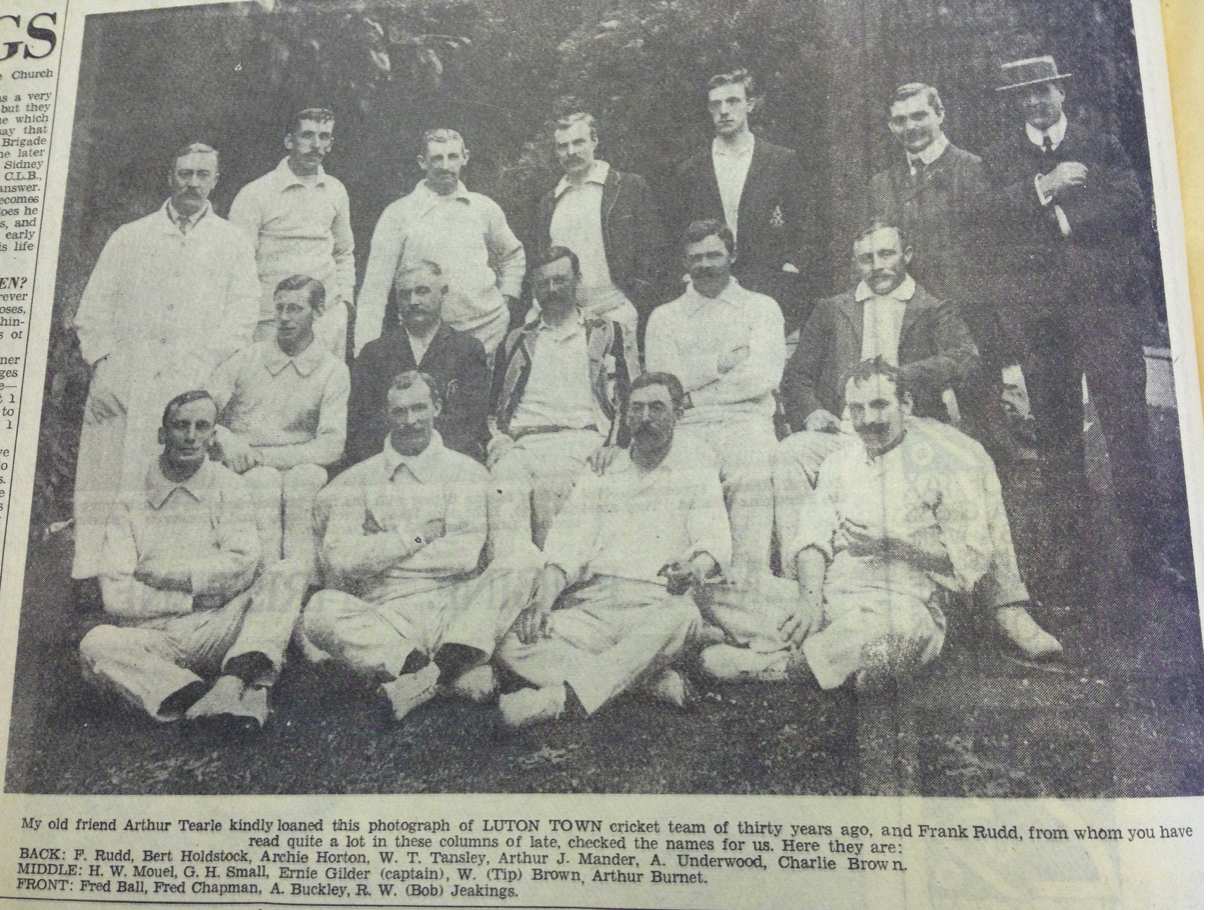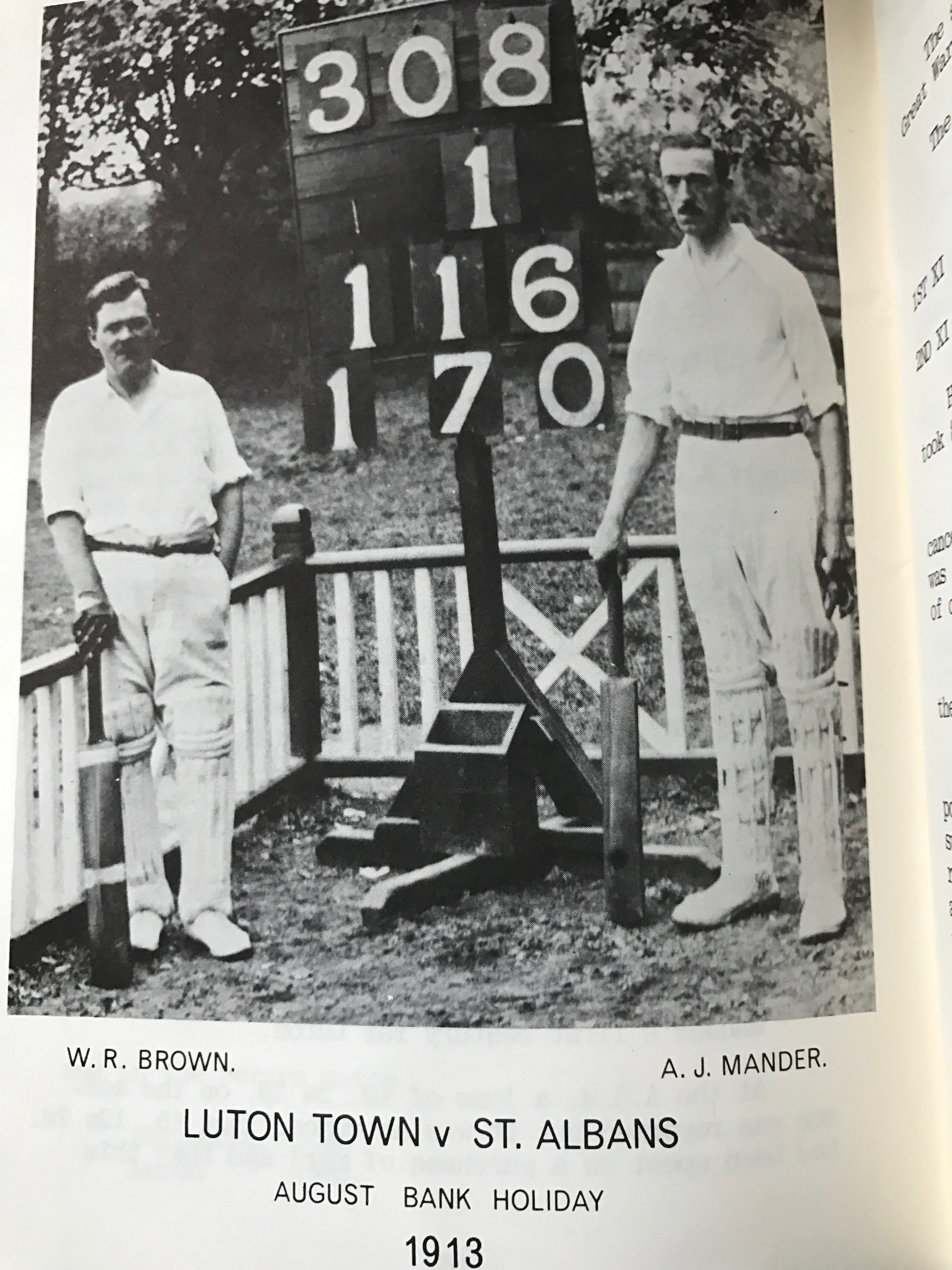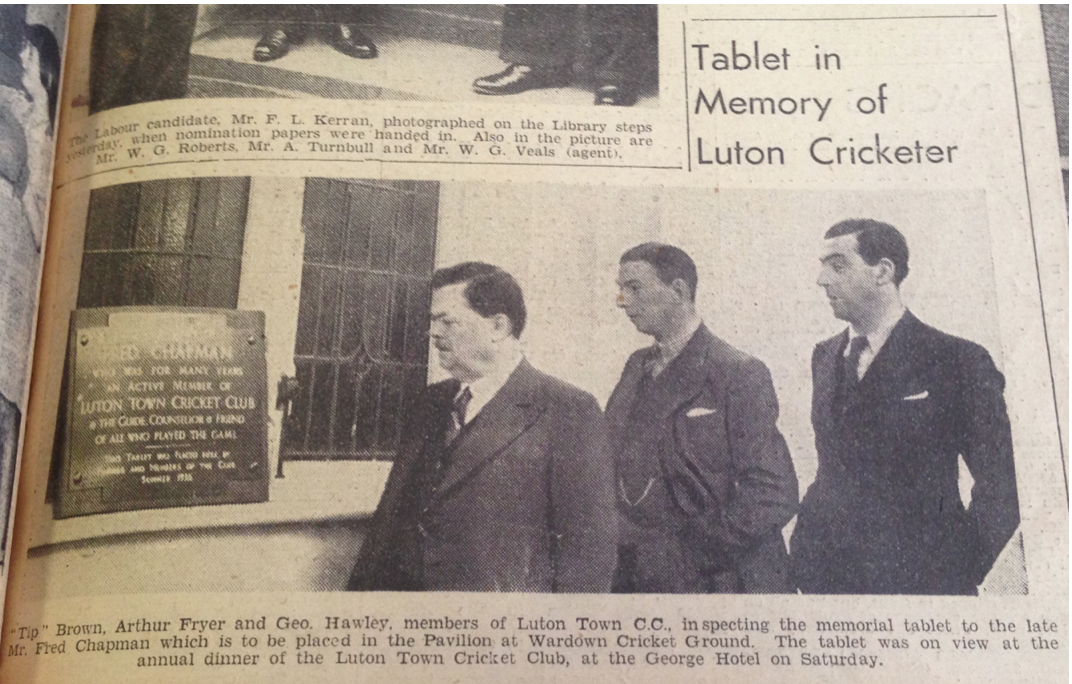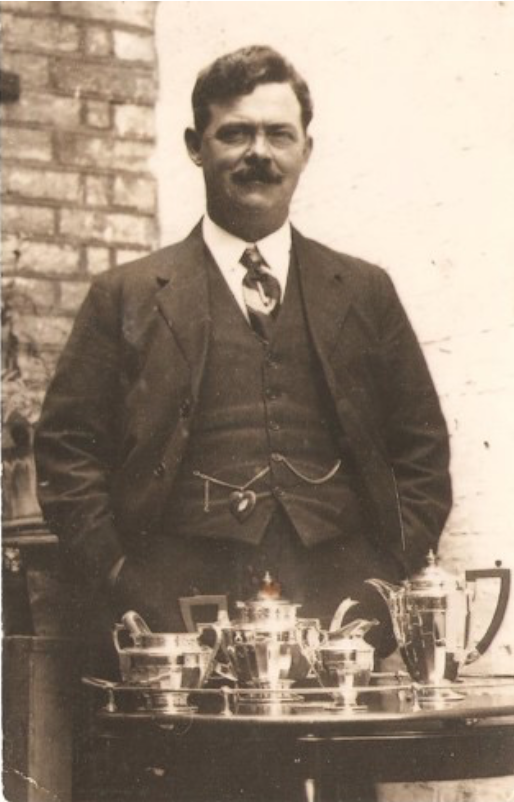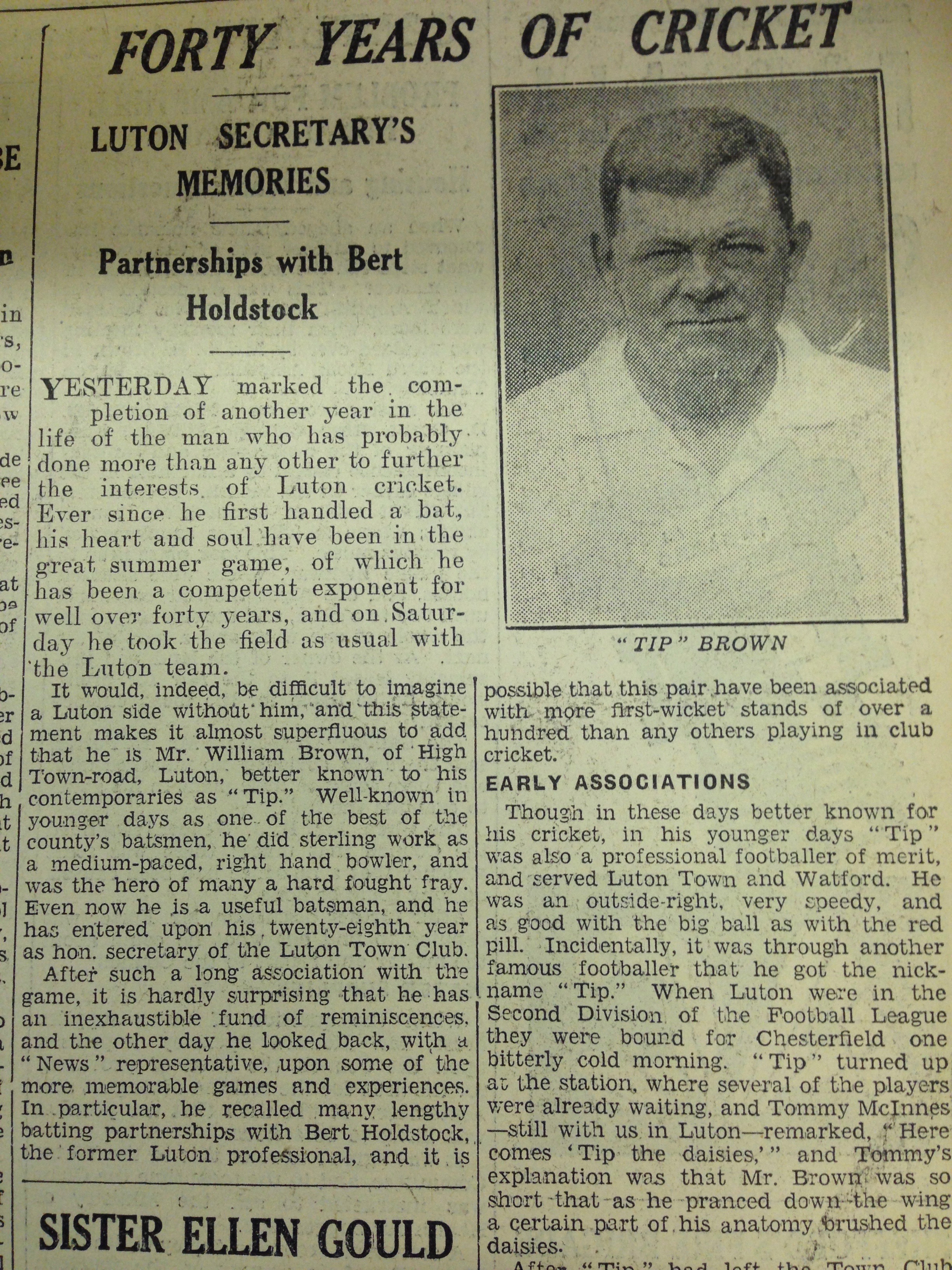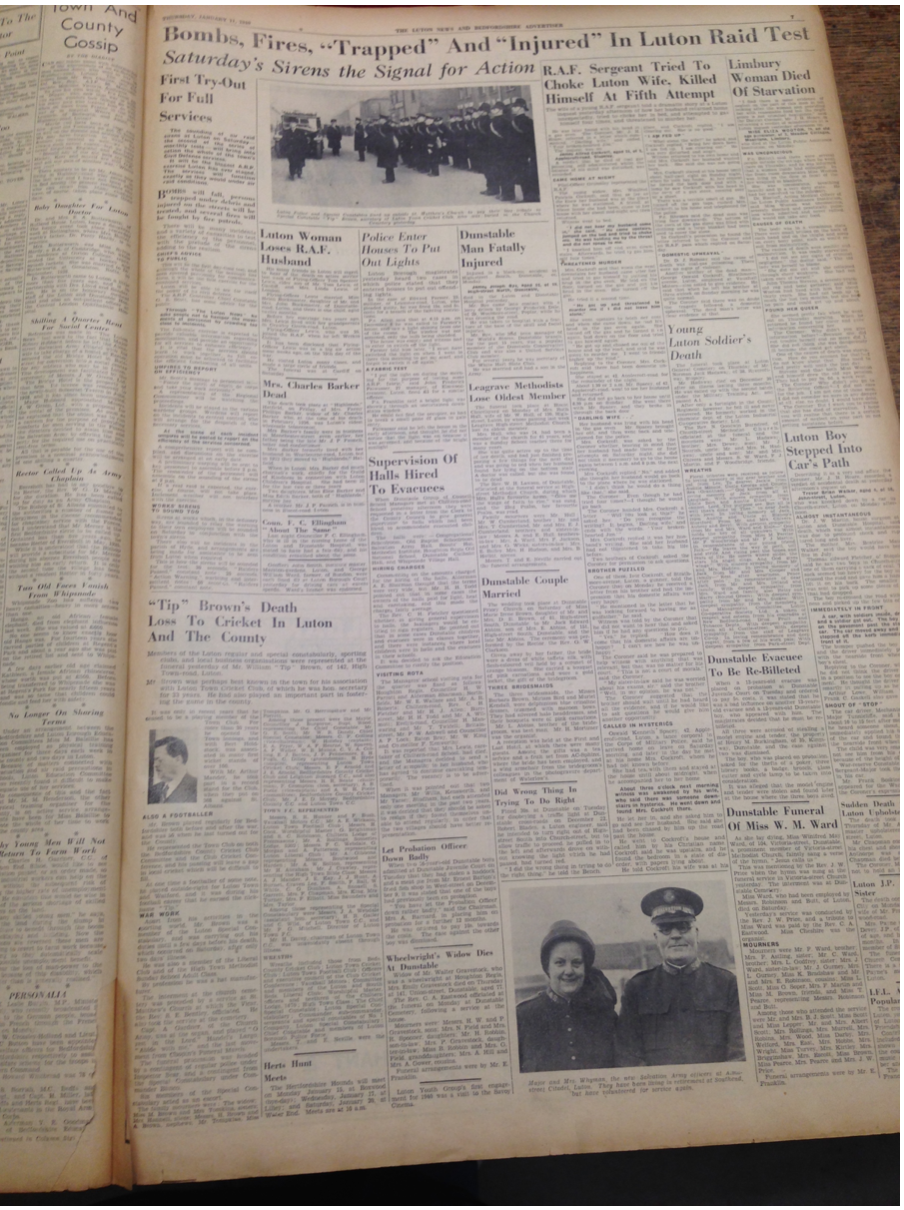George William Beldam
George William Beldam was born on the 1st May 1868 at New Cross, London. He was baptised on the 7th June 1868. His father was a marine engineer and successful businessman. George went to private schools, Acton Collegiate and then St. John’s College in Luton. St. John’s placed great emphasis on sport and George excelled at football but especially at cricket. He represented the College at both sports. Playing football alongside the Lomax brothers in the College team he was asked to play for the Straw Plaiters in 1885. Team line ups at this time are incomplete but he made at least one first team game and probably many reserves games. He entered Peterhouse, Cambridge University on the 27th April 1886 and played alongside J.C and E.H. Lomax and is pictured left in his college kit. He never represented the University at cricket and had to be content with the title of “the best cricketer who never got his Blue.”
George gained his B.A. in 1889 and his M.A. in 1893 and joined his father’s firm, The Beldam Packing Company. He concentrated on designing new high-pressure steam packings and many were patented and supplied to the great liners of the day including the Titanic.
He married Gertrude Cottam on 9 February 1892; then Margaret Crew followed by Jessie Thomson.
George was also a keen motorist and owned a Lorraine Dietrich motor car. At this time steering systems were rudimentary which, combined with narrow, high pressure tyres caused many skids and accidents. George designed a tyre which reduced skidding and, after receiving R.A.C. approval, he founded the Beldam Tyre Company.
The First World War saw Beldam tyres used on armoured cars in the desert. Lawrence of Arabia said;
“While we drank the others drew alongside, and reported two bursts of Beldam tubes in the heat of their swoop at a mile a minute across the scorching plain.”
After the war there was a motoring boom and the company prospered. The motoring boom was followed by bust and restricted credit. The company folded and George went back to helping his brother Cyril (also ex Luton Town) develop high pressure steam packings and other products. The Beldam Packing and Rubber Company Limited was formed (it merged in 1988 to form Beldam Crossley who are still in business today).
George did not live to see his final invention being used – a bonding of rubber and woodchip to form a non slip surface known as “Wondegrip.” He died in 1937 but Wondegrip was applied to some aircraft in the Second World War to give safe access from the cockpit onto the wing.
Returning to sport, when George left Cambridge he played football for Brentford and cricket for Richmond, the Wanderers and West Middlesex. In 1894 he played for Middlesex second team against Essex and scored 123. In 1900 he scored ten centuries, including two double centuries. He made it to first class cricket in 1901 at the age of 32. His first class career only lasted six years and he only just missed out on the England tour to Australia in 1903/04.
In 1902 he opened the batting with W.G. Grace for the Gentlemen against the Players. Together they put on 119 for the first wicket with George getting 57. He was also a good medium paced swing bowler. He scored 4,796 runs (average 30.16) with a personal best of 155 versus Surrey at Lord’s in 1902 and took 66 catches and 76 wickets (average 27.14) with a personal best of 5/28 versus Lancashire in 1902.
Other cricket clubs include A.S. Webbe’s X1; MCC; London County; The Rest; Ealing District; Golf Cricketers; Gentlemen of South & England X1.
Having done so much in his life, George is best known for his action photography. When most photographers took posed shots of their subjects, George wanted real action. By adapting his “Videx” reflex plate camera to vastly increase the shutter speed he was able to take a series of action shots. He also tried to improve the photographic plates that were used. George managed to capture a photo of the great Australian batsman Victor Trumper jumping out his crease to drive the ball. He had made his name. Besides cricket he also took shots of other sports especially golf and was involved in the publication of a number of books. One book produced in 1904, containing photographs of famous golfers of the day, was dedicated to the then Prime Minister, Arthur Balfour.
George was a scratch golfer and introduced W.G. Grace to the game.
In his spare time, George liked to paint watercolours and would go with friends on painting holidays to Newlyn in Cornwall. He was good enough to have a painting hung in the Royal Academy.
George died of a heart attack on the 23rd November 1937 at Lower Bourne, Farnham, Surrey. He left £42,234-4-6d in his probated will.
Thanks to;
Sir Roy Beldam
The Masters and Fellows of Peterhouse, Cambridge.
Philip Pattenden
Getty Images for two photos of George
Michael Davage
*******************************************************************
James Henry Bennett
James Henry Bennett (described as Bennet on the birth register) was born in 1850 and was baptised at St. Mary’s Parish Church, Luton on the 8th June the same year. The 1871 census finds him working as a blocker and living with his father and three brothers at 88 High Town Road. Ten years later he was living at 1 Spring Place with his wife Anne, whom he married in 1875, and he was described as a “bonnet blocker.
He and Anne had one son, George William Bennett born in 1876.
James was elected onto the Luton Town Committee in late 1885 to supplement the committee who were under severe pressure as Herbert Spratley and others were not performing their duties. He remained on the committee (with the exception of the 1890/91 season when he did not stand for election) until the club became a Limited Company in 1897. He played a full part in the running of the club acting as gateman, umpire/linesman and regularly attending, and contributing to, committee meetings.
James was still a “Straw Hat Blocker” at the time of the 1911 census and lived at 87 Dumfries Street.
We are fortunate in that he and Anne celebrated their Diamond Wedding anniversary in 1935 and the Luton News covered the story. We are therefore provided with a ready made biography straight from the horses mouth. Please read down all the left hand columns before returning up to “Crimean memories.”
James gave thousands of hours of his time to football in Luton and Luton Town Football Club. Without men like James behind the scenes donating their time, there could not have been a club. James’ wife of 64 years, Ann died in early 1939. James passed away on the 7th July 1945 at 36 Cambridge Street, Luton aged 94. He left £1,740-9-2d to his son George William.
Thanks to Michael Davage
**********************************************************************************
Reverend Charles William Bennett
Reverend Charles William Bennett was born on 17th May 1865 at Elmley Castle, Pershore, Worcestershire. Baptised 28th May 1865. Attended Stratford on Avon School. He obtained a B.A. at Oxford University in 1887. Became a curate at Harpenden in 1890. Quotes are from the St. George’s School newsletter.
1888 – new master – C.W. Bennett B.A. Worcester College, Oxford, was appointed Assistant Master at the beginning of 1888.
The 1888 team profile for the School reveals that;
“Though new to the game, has proven most useful as a half-back, doing a lot of honest work.”
Played Cricket and “fives” and was also involved in the entertainment at the school.
The 1889 team profile for St. George’s says
“Has learnt to play a thoroughly sound and scientific game as centre half-back.”
Fully involved in all the School activities as already mentioned plus Chess.
1890 sees;
“The Rev C.W. Bennett was ordained Deacon on Sunday, June 8th, at the Parish Church, Berkhamstead, by the Bishop of S. Asaph, who was acting for the Bishop elect of St. Albans. Mr Bennett will take occasional duty at Harpenden Church, and assist in parish work.
He made his Luton Town debut at half-back on 1st November 1890 in a 5 4 home victory over Old St. Mark’s.
In 1891 Charles was ordained as priest at the Parish Church of St. Mary the Virgin, Saffron Walden by the Bishop of St. Albans.
His last recorded game was on the 28th November 1891 against West Herts. He was still mentioned by the committee as late as January 1892 when injuries to Paul at half-back caused a selection problem. He also played for St. Albans and the photo below is taken from their 1891/92 team photo.
19th December 1891 at Prize giving evening.
“The prizes were given away by the Head Master on Monday evening, December 19th.
He took the opportunity of bidding farewell to the Rev, C.W. Bennett, who has been a master in the School for four years, and said how deeply he, his colleagues, and the boys regretted his leaving, a regret which would be felt also by very many outside S. George’s, for he had so thoroughly identified himself with everything that went on both in and out of School. He sincerely wished him all happiness and begged him to remember he would always have a hearty welcome from everyone, whenever he liked to come and pay them a visit at S. George’s.
The Rev C.W. Bennett is going for a year to help in the parish of S.Mary, S. George’s in the East, London, under the Rev. H. Henman, with the intention afterwards of being a Chaplain in the Navy.”
On October 19 1893, Reverend Bennett brought a team to play St. George’s and won 4 goals to one.
He joined the old boys club, “the Georgians” and continued to stay in touch with the school. He wrote an article for the School magazine in 1894 on the East End of London. He took a cricket team to play St. George’s in 1895, 1897 and 1898.
He became Rector at Woolstone, Gotherington, Gloucestershire from 1906 until 1932. He married Mabel Annette Gordon on 20th April 1909. A quiet wedding owing to the death of the brides’ sister. She was given away by her brother Capt. Alex Gordon.
He died in Renishaw Hospital, Scottsburgh, South Africa on the 22nd April 1945. He lived in Umkomaas, Natal and left £6,324-12-8s in his will.
Thanks to
Sue Mitchell at St. George’s School, Harpenden for her very generous help.
David Tavener/St Albans City and St Albans Library
Michael Davage
*****************************************************************************
Edwin Birch
Edwin scored 22 goals in 55 games.
Born in Newhall 7th October 1869.
One of 12 children. His Scottish wife Alice Edith Hodgkinson (born Banff 24/10/1873) bore him 8 children.
Edwin was an Assistant Schoolmaster for a Local Education Authority. At the outbreak of World War Two he lived at 12, Fairfield Road, Middlesex.
His death was registered in St. Albans early 1946 (age 78).
Thanks to Michael Davage.
***********************************************************************************
James Blessington
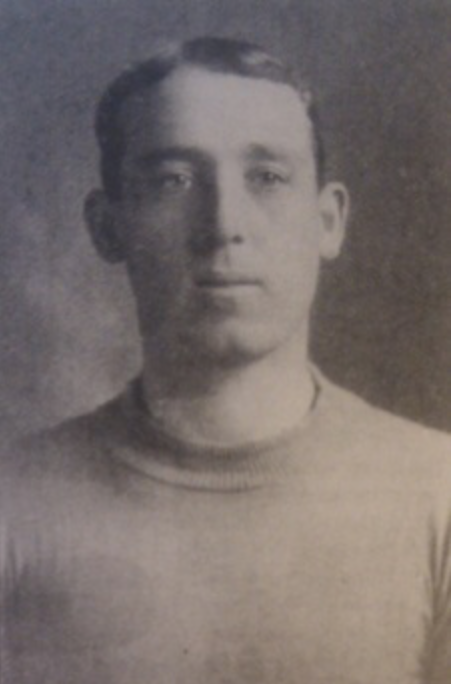 Born in Linlithgow on the 28th February 1874, James (Jimmy) Blessington was one of Celtic’s earliest heroes. The son of a quarryman Jimmy signed for Celtic on the 27th August 1892 from Leith Athletic and scored 9 goals in his debut season as the Bhoys claimed their first league Championship and were runners-up in the Scottish Cup.
Born in Linlithgow on the 28th February 1874, James (Jimmy) Blessington was one of Celtic’s earliest heroes. The son of a quarryman Jimmy signed for Celtic on the 27th August 1892 from Leith Athletic and scored 9 goals in his debut season as the Bhoys claimed their first league Championship and were runners-up in the Scottish Cup.
A right sided forward who had an eventful career, he first came to prominence with the Celts after starting his playing days in Leith with Leith Hibernian, Hibernian and Leith Athletic. His signing with the Bhoys was controversial and was investigated by the SFA, who exonerated Celtic but suspended the player for a month.
With strenuous efforts being made to secure a new home for Hibernian their Committee is said to have suffered a blow when James Blessington signed for Celtic as he was a star player. Hibs were poorly run back then and a number of players departed from Hibs out of concern or avoided going to the club despite their early promise and success. The game was evolving but Hibs’ management weren’t, and in time their treasurer ran off with the kitty to America.
Over the next six years James won three Scottish League championships and also appeared in two Scottish Cup finals. He made a total of 99 Appearances for Celtic scoring 38 goals.
In 1898 he went south to Preston North End, but only played a season before starting a rapid series of moves to Derby County, Bristol City and Luton Town (all inside a year). His entry from the Luton Town Handbook published by the Luton News is below. James played 104 games for the Straw Plaiters scoring 38 goals.
James moved to Leicester Fosse in May 1903. Over the next five years he made 100 league appearances for Leicester, becoming the team manager for the last two years.
He was prevented from taking up a coaching position in Germany by the outbreak of the First World War. He joined the Merchant Navy on the Atlantic route and went to Celtic Park whenever he docked in Glasgow.
After the war he continued his trade as an electrician before running a hotel in Guernsey. Later he became a publican in Newton Abbot but also had a spell around 1913 as coach of Belfast Celtic
James died on the 18th April 1939 in Newton Abbott.
Thanks to thecelticwiki
*********************************************************************************************
John Brock
John played 74 times for Luton Town scoring 18 goals.
***********************************************************************
William “Tip” Brown
William Brown was born on the 27th June 1874 in Luton to parents William and Martha. The 1881 census finds him living with his parents and family at 138 High Town Road. His brother, who was 13 years older, was named Roland. Confusion can arise in Victorian families because a son (usually the eldest) is often named after the father. Therefore that son is often known by his middle name for the sake of clarity. However, without a middle name, a family friend called William “Young Roland.” The name Roland stuck and he is often referred to as R. Brown and Roland Brown in football reports. The nickname “Tip” that William acquired is explained further down this biography.
William was a Straw Hat Blocker in the 1891 census. He married Martha Ellis on the 24th December 1894 and they lived together at 142 High Town Road for the rest of their lives, just two doors from the family home. By 1901 William was a Straw Hat Manufacturer and was an employer.
We have a short biography from the Luton News 27th October 1892.
“More familiarly know as Roland Brown, played the first half of last season in the ranks of St. Matthews and afterwards joined the Montrose. He first came under the notice of the Town Club, by playing as a substitute for “Woodville” [This means that Woodville were short of a player at the start of the game and Brown volunteered from the crowd to play for them]. On that occasion his performance was regarded as a splendid one for a junior, for as a matter of fact the substitute proved to be about the best man among the Woodville forwards. On the retirement of George Deacon, Brown was given a trial against the City Ramblers on Good Friday, and against the 1st Scots Guards on Easter Monday, and so well did he acquit himself, that his inclusion in the team regularly was regarded as a certainty. This year accordingly he obtained the coveted “Red” and he has played in all the matches to date. So far, however, he has been rather badly handicapped through having a different partner almost every time of playing. There have been many disputes as to Brown’s age, nineteen people out of twenty being under the impression that he has attained his majority but I have the best authority – that of Brown himself – for saying he is only eighteen years of age.”
William played regularly in the Luton Town first team following his debut at Easter 1892. A speedy winger, he provided many crosses for his fellow forwards and helped them win the Luton Charity Cup in 1894. On entry to the Southern League in the Autumn of 1894 season he was placed into the reserves. He joined St. Albans the following season and he is pictured (left) in their 1895/96 pink and black shirt. He made his St. Albans debut on 15th October 1895 and scored in a 2 0 win over Harrow Athletic. He continued to play for the Saints and played in every match in their 1898/99 season scoring 6 goals from the right wing. He was considered by some to be the best crosser of the ball in the Southern League. In 1899 William came back to play for Luton Town and played regularly in the first team and scored 10 goals in 59 appearances. Tip also played 7 games in the United League in 1900/01 scoring 4 goals. He then signed for Watford where he was the first choice right winger for most of his three seasons there. He moved back to Luton for a third spell where he first featured in friendlies and reserve games. He may have played in a few first team games (the newspapers are unclear as to which Brown played). Tip then concentrated on cricket and was the opening batsman for Luton Town Cricket Club for over 30 years.
Below is the Luton News Football handbook entry for William’s second spell at the club.
Above from the Luton News 20th February 1936 Above from the Luton News 11th April 1935
Luton Town Cricket Club 1908 above (as it appeared in the 1938 Luton News).
Above from the Luton News 5th November 1935
The above photo needs some research to identify the occasion.
The following clips are from the Luton News of the 28th June 1934
When I found out that William died in 1940 I feared that there would be little or no mention in the newspaper bearing in mind the war. It is a mark of the man that he was given such attention by the Luton News below.
From Luton News January 1940
“Tip” Brown’s Death loss to cricket in Luton and the county.
Members of the Luton regular and special constabulary, sporting clubs, and local business organisations were represented at the funeral yesterday of Mr William “Tip” Brown of 142 High town-road, Luton.
Mr Brown was perhaps best known for his association with Luton Town Cricket Club of which he was hon. secretary for 33 years. He had also played an important part in fostering the game in the county.
It was only in recent years that he ceased to be a playing member of the Town Club. For more than 30 years he opened the Town innings, and with Bert Holdstock, was associated in many first wicket stands of over 100.
With Mr Arthur Mander, he took part in a record stand for the club when they put on 308 against St. Albans.
Also a footballer
Mr Brown also played regularly for Bedfordshire both before and after the war, and was 50 when he also turned out for the county.
He represented the Town Club on both the Bedfordshire County Cricket Club Committee and the Club Cricket Conference and his passing will leave a gap in local cricket which will be difficult to fill.
At one time a footballer of some note, he played outside-right for Luton Town and Watford, and it was during his football career that he earned the nickname “Tip”.
War Work
Apart from his activities in the sporting world, Mr Brown was a member of the Luton Special Constabulary, and was carrying out his duties until a few days before his death, which occurred on Saturday, after only two days’ illness.
He was a member of the Liberal Club and of the High Town Methodist Sunday School Adult Class. By profession he was a hat manufacturer.
The funeral service was held St. Matthews and he was interred at the cemetery. The Constabulary, Football and Cricket clubs were represented along with many important figures in the town.”
William left £690 8s 8d in his will to Martha.
Thanks to Margaret Martin who kindly provided the photographs of young William and the tea set photo.



